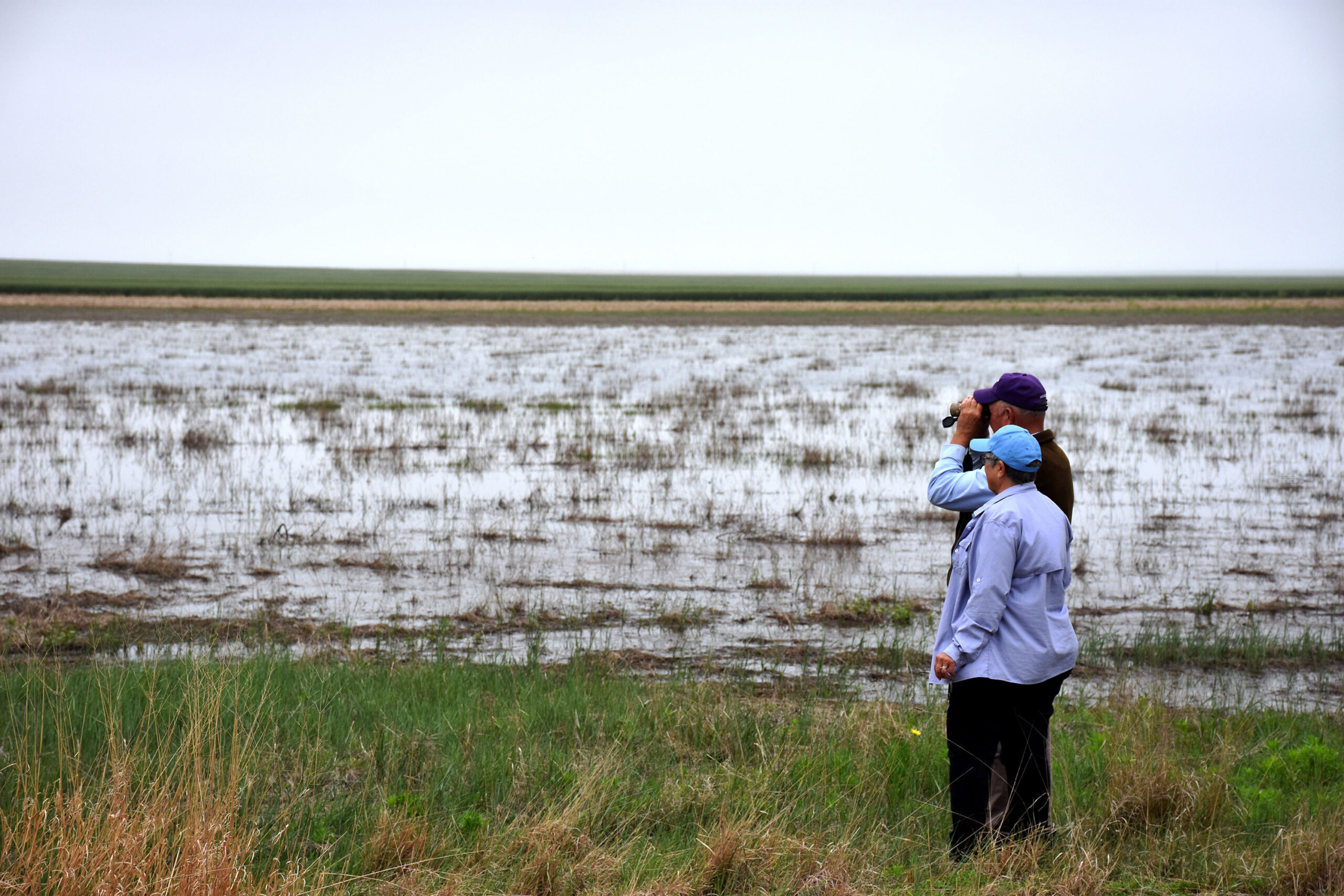
Some years back when they first started talking about Global Warming I asked the state climatologist, who was in K-State’s physics department, what he thought. He said, “We’ll know for sure….in 100 years.”
Right now, though, after the wettest October and the wettest May in Kansas history, and the slowest planting in US history, maybe instead of Global Warming we should be talking about Global Wettening.
With right at 30 inches of total precip last year, 2018 was the wettest year in all of the 44 years that we’ve been farming here in western Lane County. That trend continues into 2019. Normally to date we would have gotten a little over 6 inches of rain and snow melt, but we’ve already over 10 inches.
And with May and June being the wettest two months of the year, I’m getting nervous about what wheat harvest is going to look like.
This is a lot like the winter of 1992-1993 when we got 65 inches of snow””instead of our normal 18 to 20 inches. If all of the winter-received moisture had been snow instead of some coming as rain, this past winter would have been identical to the 65 inches. And as they say, trends in weather are way more likely to continue than to change, so it’s interesting looking at what happened in the rest of l993.
After the very wet winter, crop conditions started off great…but it kept on raining. Consequently wheat harvest was delayed. North central Kansas got 12 to 17 inches of rain in July, for instance. Statewide, substantial acreages were lost, yield prospects plummeted and quality declined. By August 1, 10% of the Kansas wheat crop was still in the field.
And while it was wet here this past winter, we have no idea as to what it was like north and east of Kansas. A University of Nebraska agronomist stopped here last week and told me of 60 and 90-ton chunks of ice that eastern Nebraska farmers found in their fields””over 5 miles from the rivers. They’re hoping the ice will be melted by the end of summer! Also entire fields covered with 2 to 6 and 8 feet of sand. We got off easy.
So what is going on? Over the past several years, our weather has varied from extremely wet to extremely dry to extremely wet to extremely dry and here we are now being extremely wet. I’ve talked to several K-State professors about the extremes we’re experiencing and they all say this is exactly what was predicted to happen with global climate change.
This winter I heard Jeff Hutton with National Weather Service in Dodge City talk about our recent weather. He said never before have we had more than 3 years in a row of above average conditions for rainfall and summer row crop conditions. “However, we just went through the fifth.”
Those remarks remind me a lot of what I call The Nice Nineties. Back then we had nine years of wetter than normal conditions which resulted in very high corn and sorghum yields. But the longer the trend continued, the more concerned I got. Statisticians and accountants often talk about “gravitating to the means.” What that means is that over time, things average out. And when it came time to average out the nineties, it was ugly. I call those following years The Naughty Aughts. In at least one of those years, the entire sorghum crop was lost. In another year, you harvested only half the acres planted. I still remember farmers swaggering into the coffee shop to brag about their top field””that made 30 bushels per acre!
But the statisticians were right. The nine good years combined with the nine bad years resulted in a perfect long term average. So when are we going to start gravitating?
All this reminds me on another conversation I had years ago with no-till guru Virgil Simpson in Ransom, Kan. As we were driving around looking at his fields during one of those wet years, he said things looked then a lot like they did in 1951, an incredibly wet year with regular flooding. Virgil said we all remember how wet it was. But he says what we all forgot is that after 1951 was done with us, we had to wait another 2 or 3 or 4 years before we saw our next spring rain. In this case, the wet years ushered in a vicious drought. While shorter than the drought of the thirties, the drought of the fifties was incredibly sharp.
And finally, Virgil’s comments about drought brought to mind a conversation with a Texas Panhandle farmer during the drought of the Naughty Aughts. Back then he said he had given up on praying for rain. He said he was now praying for dust…because that prayer worked every time.
Wheat and More….or Less blog
by Vance Ehmke

